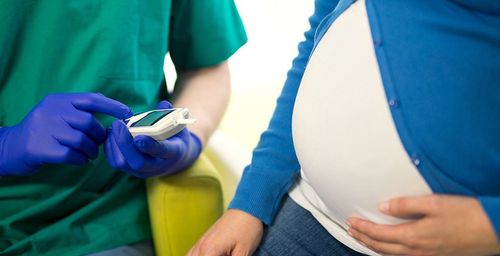This is an automatically translated article.
Ergotamine has been used in clinical practice as a migraine medication for over 50 years. In essence, from a medical perspective, ergotamine is useful not only for migraine headaches, but also in people who have occasional or persistent headaches and are able to adhere well to dosage restrictions. Because, compared to ergotamine, triptan is often a better migraine drug choice from both efficacy and side effects aspects.
1. Introduction of the drug ergotamine
Ergotamine is an ergot alkaloid drug. Historically, ergotamine broke out in the medical field during the Middle Ages when mass poisoning by ergotamine occurred throughout Europe from eating bread contaminated with the fungal nodule of the fungus Claviceps purpurea, a parasite on rye , wheat, barley and other grains. Because of this ingredient's notable uterine contraction and vasoconstriction effects, ergotamine is used to promote delivery and control postpartum haemorrhage.The development of the use of ergot derivatives in obstetric practice was initially mentioned, before the use of ergotamine e was applied as a treatment for migraine since the early decades of the twentieth century. It is worth noting, however, that, despite its widespread use, the use of ergotamine today has little consensus in general practice, in terms of neurologists' view of migraine general head.
2. Uses of ergotamine in migraine treatment
Migraine is characterized by recurrent headaches, which can be defined as headaches that return or get worse and associated migraine symptoms within 24-72 hours of treatment. initial drug treatment. This is a big deal for all acute migraine treatments.
The mechanism of migraine recurrence is still unknown, but treatment with temporary ergotamine-based migraine-trigger suppression seems to be more likely than to prevent a new attack. The longer plasma half-life of ergotamine does not reduce the frequency of headache recurrence, but may delay the time to relapse.
In addition, compared with other migraine medications, an additional benefit of ergotamine is that it provides a lower risk of headache recurrence than triptan.

Ergotamine đã được sử dụng trong thực hành lâm sàng như là một loại thuốc điều trị đau nửa đầu
3. Problems with side effects when using ergotamine
Ergotamine has low receptor selectivity, increasing the risk of drug-induced side effects. When ergotamine is taken regularly as a migraine medication, people often experience nausea and vomiting. This is a major clinical disadvantage since these symptoms are inherently common in migraine attacks. Nausea and vomiting occur in about 10% of patients after oral administration of ergotamine and double that number after parenteral administration. Nausea with ergotamine is probably due to a direct effect on the emetic centers of the central nervous system.
In addition, leg weakness has also been reported and sometimes severe muscle pain in the extremities has been reported following ergotamine administration. Numbness and tingling in the fingers and toes are other warnings that alkaloids abuse can cause. Local edema and pruritus may occur in an infrequently hypersensitivity patient. Most of these effects are not alarming and usually do not necessitate interruption of ergotamine therapy. In addition, at doses used in the treatment of migraine, rectal administration of ergotamine generally produces little change in blood pressure but causes a slow progressive increase in peripheral arterial spasm. long or up to 24.
4. When is ergotamine not to be taken?
Ergotamine is contraindicated in women who are or may become pregnant, as the drug may harm an unborn baby. Because of cardiovascular side effects, ergotamine is also contraindicated in patients with peripheral vascular disease, coronary heart disease, uncontrolled hypertension, stroke, impaired liver or kidney function, and infections blood.
On the other hand, based on the theory of additive pharmacological effects of the drug, ergotamine should not be taken within 6 hours of taking a triptan. Also, similar triptans should not be taken within 24 hours of taking ergotamine.
In addition, although ergotamine's primary use is as a migraine medication, experts also recommend that ergotamine should not be used in complex migraines, persistent migraines, or migraines. familial or familial hemiplegic migraine.

Người bệnh thường bị buồn nôn và nôn khi dùng ergotamine thường xuyên
5. Consensus recommendations on appropriate indications for ergotamine use
Although there is still a lack of consistent evidence for the efficacy of ergotamine, neurologists must still place the indication for dosing in the therapeutic context. Should ergotamine be used and if so, when? Some argue that ergotamine still has a place in modern clinical practice but only when used with care. Many patients who used to take ergotamine in the pre-triptan period may be better off not prescribing it now.
Furthermore, ergotamine is still useful in certain populations, such as those with persistent attacks or those with severe recurrent headaches. When compared with the clinical results achieved, the benefits of ergotamine can be remarkable at a reasonable cost.
In a nutshell, ergotamine is an ergot alkaloid drug used to treat or prevent vascular headaches (such as migraines or cluster headaches). Compared with current migraine medications, ergotamine is no longer the preferred choice for everyday use, nor is ergotamine for common tension headaches. In addition, the use of ergotamine is also applied in the field of obstetrics but has long been replaced.
Please dial HOTLINE for more information or register for an appointment HERE. Download MyVinmec app to make appointments faster and to manage your bookings easily.













